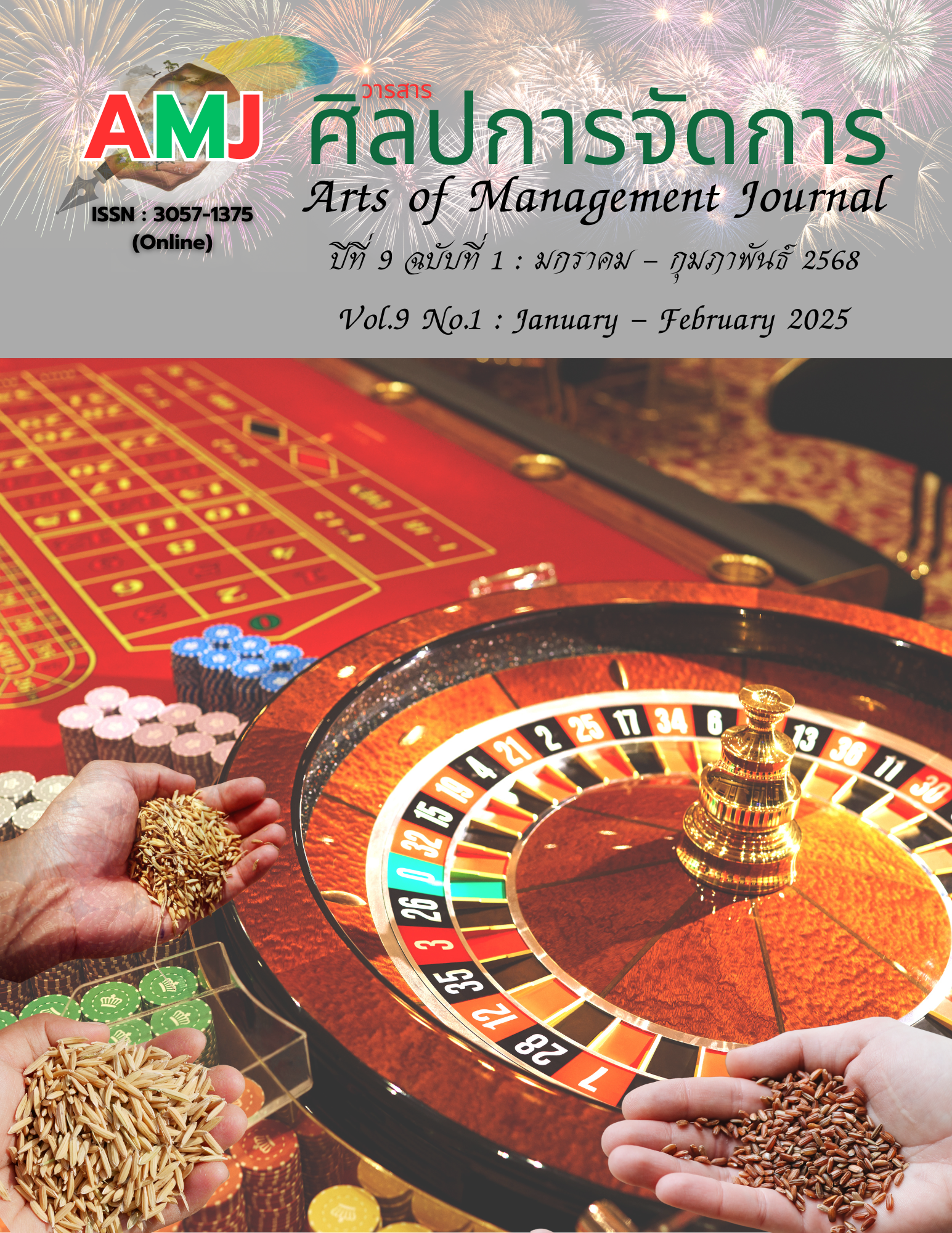การพัฒนานวัตกรรมสื่อดิจิทัลดนตรีสากลเพื่อส่งเสริมทักษะปฏิบัติอูคูเลเล่ สำหรับนักเรียนชั้นประถมศึกษาปีที่ 5 โรงเรียนสาธิตมหาวิทยาลัยศรีนครินทรวิโรฒประสานมิตร (ฝ่ายประถม)
Main Article Content
บทคัดย่อ
บทความนี้มีวัตถุประสงค์เพื่อ 1) พัฒนานวัตกรรมสื่อดิจิทัลดนตรีสากล เพื่อส่งเสริมทักษะปฏิบัติอูคูเลเล่ 2) ศึกษาผลการใช้นวัตกรรมสื่อดิจิทัลดนตรีสากล เพื่อส่งเสริมทักษะปฏิบัติอูคูเลเล่ การวิจัยครั้งนี้เป็นการวิจัยและพัฒนา เครื่องมือที่ใช้เก็บรวบรวมข้อมูลได้แก่ นวัตกรรมสื่อดิจิทัลดนตรีสากล แผนการสอน แบบทดสอบผลสัมฤทธิ์ทางการเรียน และแบบประเมินทักษะปฏิบัติอูคูเลเล่ กลุ่มตัวอย่างที่ใช้ในการวิจัยครั้งนี้ เป็นนักเรียนชั้นประถมศึกษาปีที่ 5 โรงเรียนสาธิต มศว ประสานมิตร (ฝ่ายประถม) ได้มาจากการสุ่มแบบกลุ่ม (cluster sampling) แบบห้องเรียนได้มา 1 ห้องเรียน จาก 8 ห้องเรียน มีนักเรียนทั้งสิ้น
30 คน วิเคราะห์ข้อมูลด้วยสถิติเชิงบรรยาย ได้แก่ ค่าเฉลี่ย ส่วนเบี่ยงเบนมาตรฐาน และการเปรียบเทียบค่าเฉลี่ยของกลุ่มทดลอง ผลการวิจัยพบว่า
1) ผลการพัฒนานวัตกรรมสื่อดิจิทัลดนตรีสากล เพื่อส่งเสริมทักษะปฏิบัติอูคูเลเล่ พบว่า นวัตกรรมสื่อดิจิทัลดนตรีสากล เป็นสื่อที่สามารถนำเสนอวิดีโอสาธิตทักษะปฏิบัติอูคูเลเล่ ภาพเคลื่อนไหวประกอบเสียงจังหวะโน้ตเพลง ทำให้มีคุณภาพด้านการออกแบบและพัฒนาอยู่ในระดับดีมาก (x̄ = 4.26, S.D. = 0.82) อีกทั้งคุณภาพด้านการนำเสนอเนื้อหาอยู่ในระดับดีมาก (x̄ = 4.39, S.D. = 0.78) รวมถึงมีประสิทธิภาพ 90.22/ 96.28 ซึ่งสูงกว่าเกณฑ์ที่กำหนดไว้ 80/80
2) ผลการใช้นวัตกรรมสื่อดิจิทัลดนตรีสากล เพื่อส่งเสริมทักษะปฏิบัติอูคูเลเล่ พบว่า ผลสัมฤทธิ์ทางการเรียนของผู้เรียนที่เรียนผ่านนวัตกรรมสื่อดิจิทัลดนตรีสากล เพื่อส่งเสริมทักษะปฏิบัติอูคูเลเล่ หลังเรียนสูงกว่าก่อนเรียน อย่างมีนัยสำคัญทางสถิติที่ระดับ .01 และนักเรียนมีทักษะปฏิบัติอูคูเลเล่อยู่ในระดับดีมาก (x̄ = 14.25, S.D.=0.82)
Article Details

This work is licensed under a Creative Commons Attribution-NonCommercial-NoDerivatives 4.0 International License.
ทัศนะและความคิดเห็นที่ปรากฏในบทความในวารสารศิลปการจัดการ ถือเป็นความรับผิดชอบของผู้เขียนบทความนั้น และไม่ถือเป็นทัศนะและความรับผิดชอบของกองบรรณาธิการ ยินยอมว่าบทความเป็นลิขสิทธิ์ของวารสารศิลปการจัดการ
References
Akkeedej, A. (2020). The development of augmented reality media in musical instrument for grade 4 students of Srinakharinwirot Ongkharak demonstration school[Master's thesis, Srinakharinwirot University].
Annual report. (2021). Srinakharinwirot University Demonstration School Prasanmitr (Primary Division).
Bamrungchip, U. (2023). Creative Innovation for Learning Towards Digital Citizenship. Chonburi.
Boonlong, R. (2019). Study of learning achievement on music symbols by active learning: Music learning program for Prathom Suksa 3 students. St. Joseph convent school, Bangkok[Master’s thesis, Srinakharinwirot University].
Charoensettasin, T. (2022). Good school. Newton School.
Karo, D. (2019). Revolutionizing teaching to the 4.0 classroom with Google for Education. Chulaloungkorn University.
Keamanee, T. (2010). Didactics: Knowledge for effective of the learning Process 19. Chulaloungkorn University.
Leewiwattanachot, P. (2020). The study of practicing recorder achievement by using multimedia “Recorder” of primary 6 student at Watthongsamit school[Master's thesis, Srinakharinwirot University].
Lueruk, T., & Treemas. C. (2019). Guidelines of music application usage to enhance musical learning for primary school. An Online Journal of Education, 13(2), 190–204. https://so01.tci-thaijo.org/index.php/OJED/article/view/180122
Office of the Secretary of the Education Council. (2017). National Education Plan 2017-2036. Prikwarn Graphic.
Sproat, S. (2010). Ukulele. Wise Publications.
Suksuwan, C. (2016). The creation of an electronic book to develop music teaching in terms of music signs and symbols for grade 7 students at Udomsuksa Rangsit School[Master's thesis, Srinakharinwirot University].
Teerouy, S. (2016). The study of academic achievement between blended learning and traditional learning in the subject basic keyboard for prathomsuksa five students at Pracharachuppathumwittaya school Klongsamwa district, Bangkok metropolitan administration [Master's thesis, Srinakharinwirot University].

